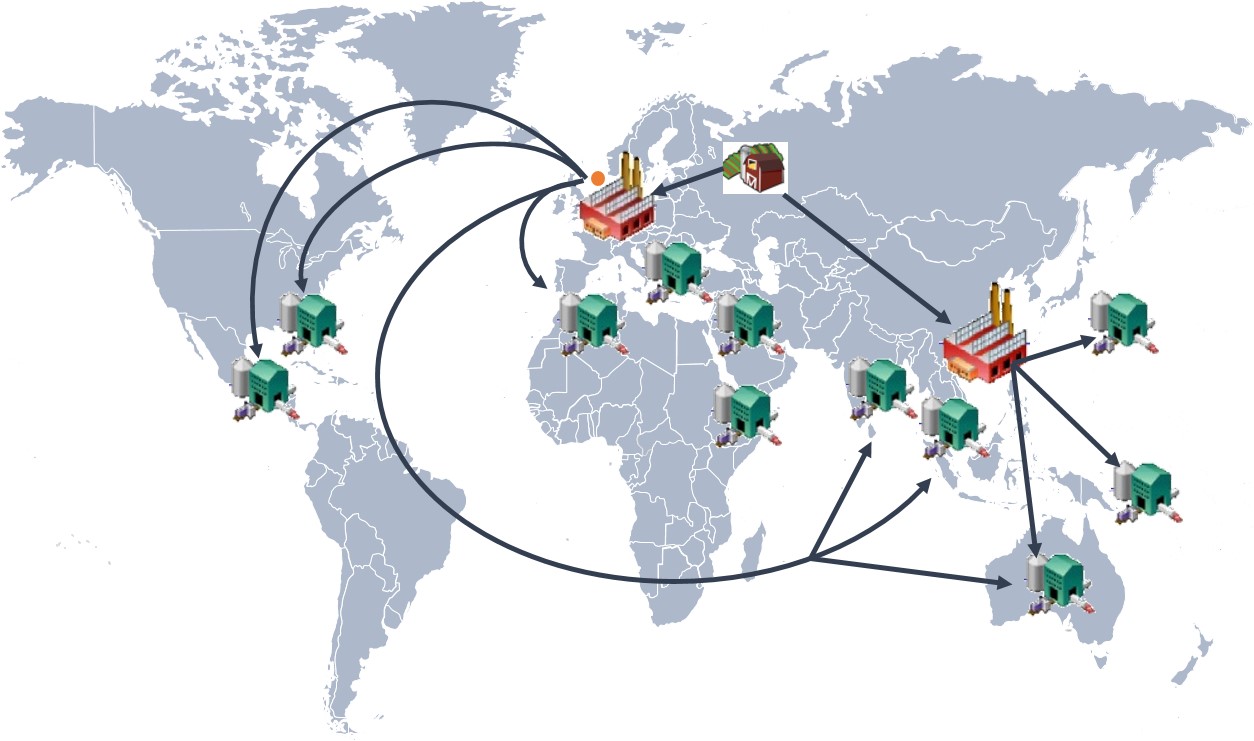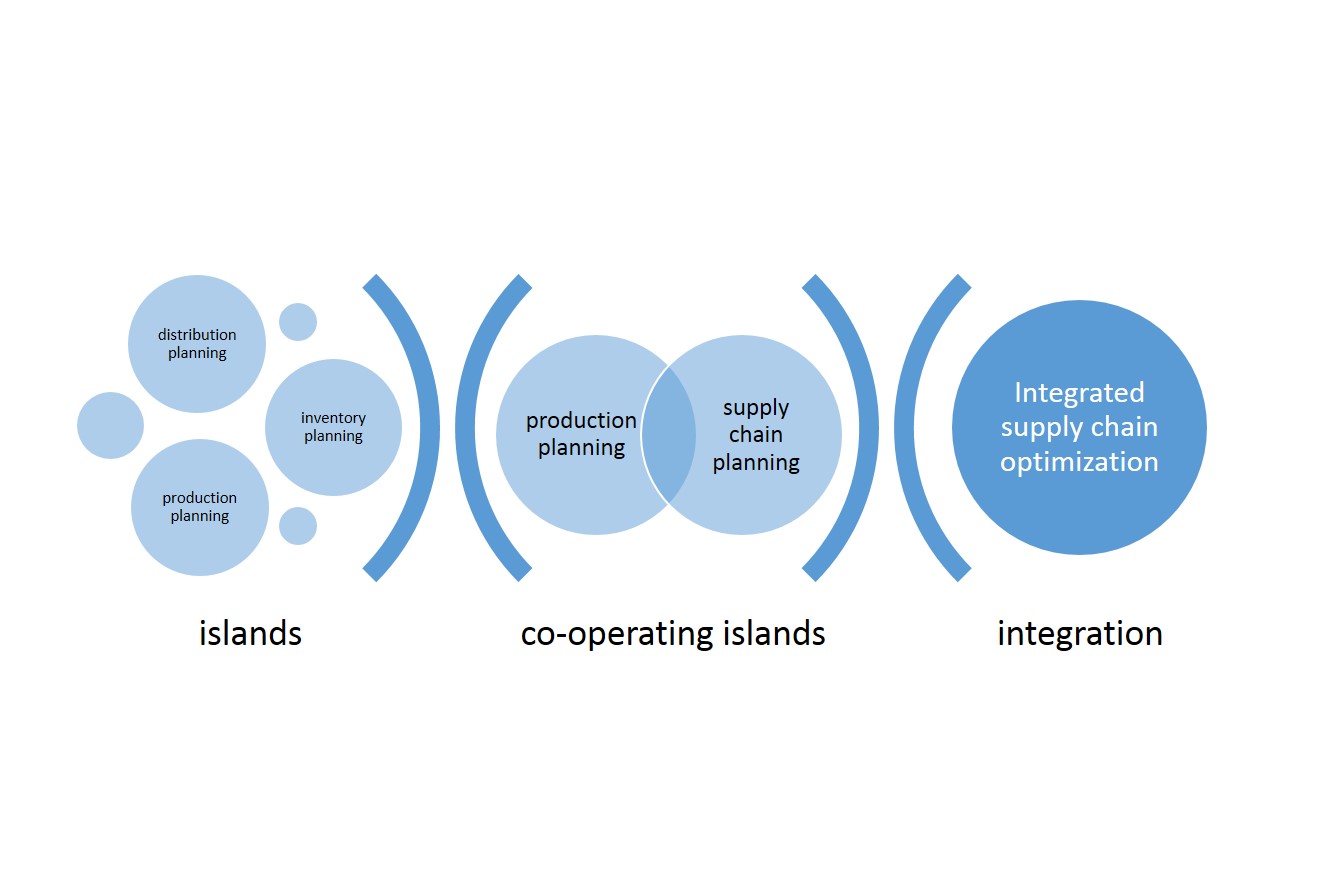What do you do when you seem to have exhausted all options for further inventory reduction, footprint reduction, transport bill reduction, or working capital reduction, and your board demands these things of you once more along with further performance improvements? You’ve gone through all the major Lean programs, adopted 6 Sigma along the way, implemented TQM, deployed the finest forecasting software and tested out multiple vendors only to find yourself at a loss for new options. When you find yourself in this kind of situation, it’s time to move towards an integrated supply chain.
Defining Integrated Supply Chains
What is an integrated supply chain? To answer that, we first need to look into what a non-integrated SC looks like. Today, most supply chains are typically managed as a string of silos. For instance, a warehouse manager normally takes care of fulfilment and inventory levels as good as he can, and is further reliant on cooperation with the supply ‘nodes’ that are active before and after him in the chain. Similarly, the transport manager does the same for her domain, and so does procurement, production, inbound planning, and all other stakeholders. Each actor strives for the best performance, but is restricted by how far he can view up and down the supply chain.
 An integrated supply chain, on the other hand, aims to coordinate all nodes in the enterprise’s supply chain, aiming for them to operate as one unified organic body. In order for integrated supply chains to work, demand must be drawn from as close to the end consumer as possible and used as a basis for planning operations throughout the whole supply chain.
An integrated supply chain, on the other hand, aims to coordinate all nodes in the enterprise’s supply chain, aiming for them to operate as one unified organic body. In order for integrated supply chains to work, demand must be drawn from as close to the end consumer as possible and used as a basis for planning operations throughout the whole supply chain.
The implications of this are many:
- Warehouse planning, production planning, distribution planning, and procurement planning are all brought in sync with each other
- All planning processes are approached from a holistic point of view, instead of a local point of view
- All planning processes take the same end-demand data as beacon, so there are no internal demand-generated fluctuations
How does it work?
How do integrated supply chains work? The easiest way to explain this is to start at the top: many companies have experience with strategic network design. It is the process of evaluating the long-term infrastructure of production and warehouse facilities against the company strategy. By nature, these exercises are mostly done in a holistic way, viewing the supply chain from end-to-end. Integrated supply chain planning means that you hold on to that wide view of the supply chain when you drill down the planning hierarchy. This implies at least the following two steps:
- Mid-term capacity planning, demand balancing or integrated (that word!) business planning – a typical horizon of 3-18 months, monthly planning ‘buckets’
- Short-term action and response planning – a typical horizon of 1-3 months, daily to weekly planning ‘buckets’
These planning levels allow you to use assets to maximize profit, revenue, or growth – or a mixture of these. They enable you to translate your company strategy consistently down your supply chain, focusing your entire operation on achieving your corporate objectives. It is easy to see that an integrated supply chain has many advantages over a silo-based supply chain. Having a holistic view and control over your entire operations allows you to go further in reducing costs while improving performance and growth at the same time.
Interested in learning more about integrated supply chains? This post is only the first in our series on integrated supply chain optimization. Follow us on Twitter and LinkedIn to get notified about our upcoming posts, where we will delve deeper into the advantages and methodologies surrounding integrated supply chains.





